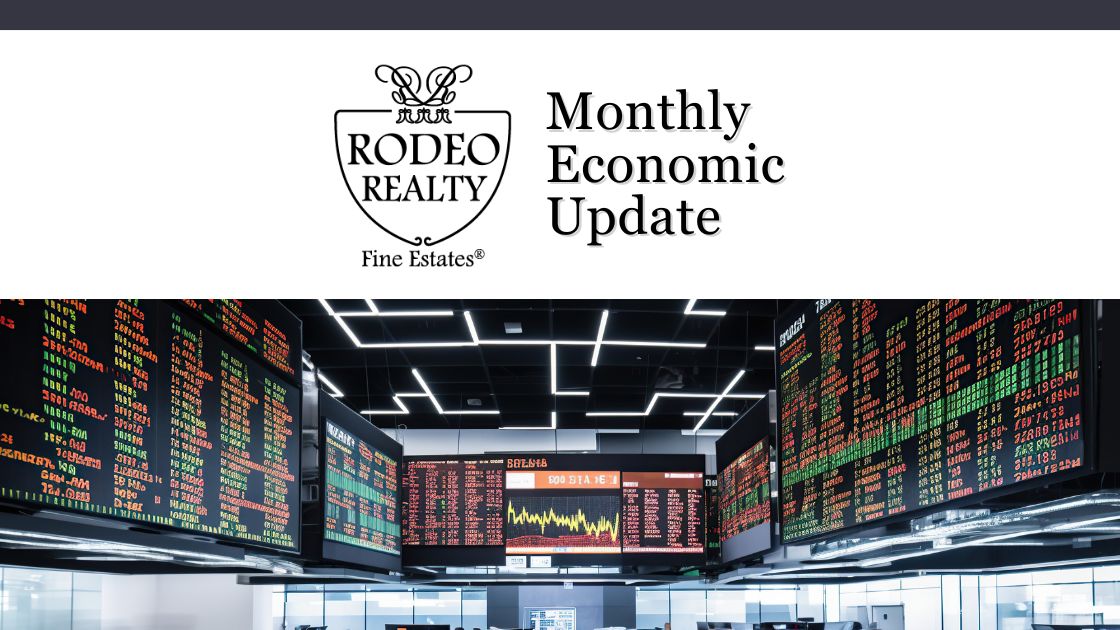| Economic news this week – As Real Estate Brokers we are focused on inflation. Higher inflation drives mortgage interest rates higher. Higher mortgage rates make homes less affordable. Key economic reports released in July confirmed that inflation has cooled to levels that are more acceptable to the Federal Reserve. The Consumer Price Index (CPI) for June came in better than expected. Month-over-month the CPI dropped 0.1%, its first month-over-month decrease since May 2020, at the peak of the pandemic. Year-over-year the CPI rate was 3%, its lowest level in three years, and down from a 3.3% increase in May. Core CPI, which excludes volatile food and energy costs was up 3.3% year-over-year, its smallest increase since April 2021. The June Producer Price Index (PPI) showed year-over-year wholesale prices are up 2.6%. The Personal Consumption Expenditures Price Index (PCE), a key indicator for the Fed, showed that consumer prices rose 2.5% in June from one year ago. That is the lowest annual increase in two years. Core PCE, which excludes volatile food and energy prices, grew 2.6% year-over-year. While the Fed left interest rates unchanged from their 25-year high levels at their July meeting, they stated that rate cuts could start as soon as the next Fed meeting in September. They hinted that they did not want to seem political as a reason for not dropping rates in their July 31 announcement, so it’s possible that even though experts surveyed gave a 97% chance of rate drops beginning in September, the Fed waits until November. One thing is for sure, it’s not a matter of if a cycle of rate drops is coming, it is a matter of when the Fed will start. Mortgage rates dropped further after the Fed’s comments on July 31. In other news, the U.S. Gross Domestic Product GDP reading showed that the economy grew at a 2.8% annual pace in the second quarter, beating analysts’ expectations of a 2.1% jump. Perhaps the Fed will get inflation under control without causing a recession and pull off a “soft landing” after all.
The graph below shows the movement in the inflation rate since 2021.
Stock Markets – The Dow Jones Industrial Average closed the month at 40,842.79, up 4.4% from 39,118.86, on June 30, 2024. It is up 8.4% year-to-date. The S&P 500 closed the month at 5,522.30, up 1.1% from 5,460.48 last month. It is up 15.8% year-to-date. The NASDAQ closed the month at 17,599.40, down 0.8% from 17,732.60 last month. It is up 17.2% year-to-date. U.S. Treasury bond yields – The 10-year treasury bond closed the month yielding 4.09%, down from 4.36% last month. The 30-year treasury bond yield ended the month at 4.35%, down from 4.51% last month. We watch bond yields because mortgage rates often follow treasury bond yields. Mortgage rates – Every Thursday Freddie Mac publishes interest rates based on a survey of mortgage lenders throughout the week. The Freddie Mac Primary Mortgage Survey reported that mortgage rates for the most popular loan products as of July 25, 2024, were as follows: The 30-year fixed mortgage rate was 6.78%, down from 6.86% at the end of May. The 15-year fixed was 6.07%, down from 6.16% last month. The graph below shows the trajectory of mortgage rates over the past year.
Freddie Mac was chartered by Congress in 1970 to keep money flowing to mortgage lenders in support of homeownership and rental housing. Their mandate is to provide liquidity, stability, and affordability to the U.S. Home sales data is released on the third week of the month for the previous month by the National Association of Realtors and the California Association of Realtors. These are June’s home sales figures. U.S. existing-home sales June 2024 – The National Association of Realtors reported that existing-home sales totaled 3.89 million units on a seasonally adjusted annualized rate in June, down 5.4% from an annualized rate of 4.11 million last June. The median price for a home in the U.S. in June was $426,900, up 4.1% from $410,109 one year ago. There was a 4.1-month supply of homes for sale in June, up from a 3.1-month supply one year ago. First-time buyers accounted for 29% of all sales. Investors and second-home purchases accounted for 16% of all sales. All cash purchases accounted for 28% of all sales. Foreclosures and short sales accounted for 2% of all sales. California home prices jumped 7.5% from one year ago in June – The California Association of Realtors reported that existing home sales totaled 270,200 on an annualized rate in June, down 2.7% from a revised 277,960 homes sold on an annualized basis last June. There was a 3-month supply of homes for sale, up from a 2.2-month supply one year ago. The statewide median price paid for a home in June was $900,720, up 7.5% from a revised median price of $837,850 one year ago. The graph below shows sales data by county in Southern California.
|
News & Media



